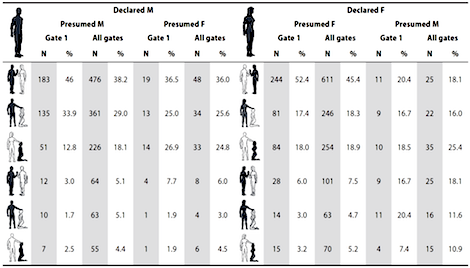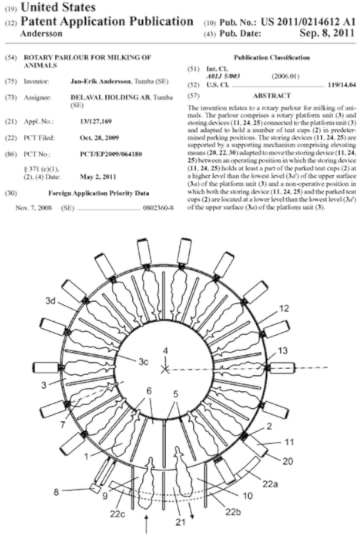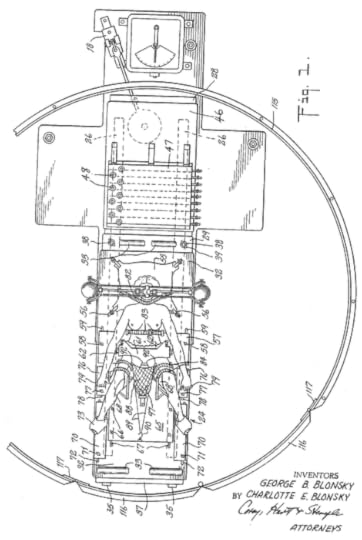Marc Abrahams's Blog, page 598
February 8, 2012
Flegr's dominance/submissivity/sadomasochism/internet-trap test
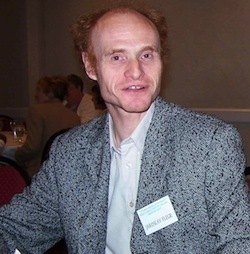 Jaroslav Flegr [pictured here] devises complex tests to discern effects that may be suble. Here he is, at it in 2006:
Jaroslav Flegr [pictured here] devises complex tests to discern effects that may be suble. Here he is, at it in 2006:
"Dominance, submissivity (and homosexuality) in general population. Testing of evolutionary hypothesis of sadomasochism by internet-trap-method," Eva Jozifkova and Jaroslav Flegr, Neuroendocrinology Letters, vol. 27, no. 6, 2006, pp 711-8. The authors, at Charles University in Prague, explain:
OBJECTIVE: Dominance and submissiveness represent strong sexual arousal stimuli for a considerable part of population. In contrast to men's sexual dominance and women's sexual submissiveness, the opposite preferences represent an evolutionary enigma. Here, we studied prevalence and strength of particular preferences in general population by Internet-trap-method.
DESIGN: The subjects who clicked the banner displayed in the web interface of e-mail boxes were allowed to choose icons with homosexual or heterosexual partner of different hierarchical position.
RESULTS: Dominant partner was chosen by 13.8% men and 20.5% women, and submissive partner by 36.6% men and 19.8% women. Homosexual partners were chosen by 7.3% men and 12.2% wome
Detail from that study:
BONUS: Kathleen McAuliffe, in The Atlantic magazine, writes about some of Flagr's other research. Her report begins:
Jaroslav Flegr is no kook. And yet, for years, he suspected his mind had been taken over by parasites that had invaded his brain….
BONUS: Eva Jozifkova's "Sexual Arousal by Higher- and Lower-Ranking Partner: Manifestation of a Mating Strategy?"

Magazine: Body Parts issue
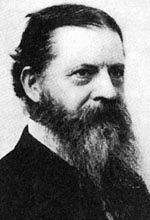 The special body parts issue (vol. 18, no. 1) of the magazine (the Annals of Improbable Research) is now online. It's got lots about feet and heads and belly navels—and much more.
The special body parts issue (vol. 18, no. 1) of the magazine (the Annals of Improbable Research) is now online. It's got lots about feet and heads and belly navels—and much more.
The pleasing-paper version was mailed to subscribers today. Click on the magazine cover (below) to download a free PDF, or buy a high-quality PDF. Or subscribe to the paper version. Mel (right) says it's swell.

"The finest piece of plastic-surgeon's porn"
Investigator Lee Chalmers alerts us to the existence of what he or she calls "The finest piece of plastic-surgeon's porn ever published in a medical journal". Chalmers faults us—correctly— for not including mention of it in the just-published special Body Parts issue of the Annals of Improbable Research. The study is:
"Concepts in aesthetic breast dimensions: Analysis of the ideal breast," Patrick Mallucci [pictured here] and Olivier A. Branford, Journal of Plastic, Reconstructive and Aesthetic Surgery, vol. 65, 2012, pp. 8-16. The authors, respectively at The Cadogan Clinic and at the Royal Free Hampstead NHS Trust, both in London, show numerous photos of bare-breasted women, and write:
"This article identifies the key parameters that define the aesthetic ideal of the breast. Whilst much has previously been written on the aesthetic characteristics of the breast, thus far objective indices of beauty have not been identified.
"Methods: In this observational study the breasts of 100 consecutive women in three quarter profile pose, having been chosen as topless models for the attractiveness of their breasts by editors of mass print media, were analysed to identify specific proportions common to all of them. Analysis of a series of less attractive breasts was subsequently carried out looking at divergence from the 'norms' identified in the first part of the study."
BONUS: The Cadogan Clinic, where Dr. Mallucci plies his trade, has a web page that flaunts the headline "How Are We Different?"

Greenhouse gasses in a greenhouse
An obvious but not-mentioned-as-often-as-you-might-expect place to savor greenhouse gasses is in a greenhouse, especially if you have brought cow manure into that greenhouse. Details of one such observation:
"Greenhouse gas emissions from an alkaline saline soil cultivated with maize (Zea mays l.) And amended with anaerobically digested cow manure: a greenhouse experiment", J. Juárez-Rodríguez, F. Fernández-Luqueño, E. Conde, V. Reyes-Varela, F. Cervantes-Santiago, E. Botello-Alvarez, M. Cárdenas-Manríquez & L. Dendooven, Journal of Plant Nutrition, 35(4), 2012, Pages: 511-523. The authors are at several institutions in Mexico. The authors say:
"Sludge derived from cow manure anaerobically digested to produce biogas (methane; CH4) was applied to maize (Zea mays L.) cultivated in a nutrient-low, alkaline, saline soil with electrolytic conductivity 9.4 dS m−1 and pH 9.3…. Nitrous oxide (N2O) emission from unamended soil was -0.0004 μg nitrogen (N) kg−1 soil day−1 and similar from soil cultivated with maize (0.27 μg N kg−1 soil day−1). Application of sludge increased the N2O emission to 4.59 μg N kg−1 soil day−1, but cultivating this soil reduced it to 2.42 μg N kg−1 soil day−1."
(Thanks to investigator Tom Gill for bringing this to our attention.)

February 7, 2012
Happy Workers (and Slough, too)
 Perhaps prompted by the extensive academic investigations into the prevalence of ennui amongst Chinese librarians, (see: Improbable Research 2012/02/06/) authors XIANG Yi-wen,WANG Hai-ying of the School of Economics and Management,Shenyang University of Science and Technology,Shenyang China draw attention to the Organizational Elements of the Happy Work
Perhaps prompted by the extensive academic investigations into the prevalence of ennui amongst Chinese librarians, (see: Improbable Research 2012/02/06/) authors XIANG Yi-wen,WANG Hai-ying of the School of Economics and Management,Shenyang University of Science and Technology,Shenyang China draw attention to the Organizational Elements of the Happy Work
"In modern society, competition is more and more intensive day by day. Life rhythm is more and more quick, we are all facing with great working pressure. Most employees have the same feeling that they are doing their work unhappily, and this feeling affect their body and mind health and life state. The organizational elements have the direct impact on the happy work. So we should cnange [sic] the work way, pay attention to the employees' improvement, strengthern [sic] the stimulation system, respect the communication and then create the happy situation."
And yet more advice comes from researcher ZHANG Kang-kang, who maybe in a good position to have had first hand experience of ennui, being based at the Library, Mianyang Normal University, China.
"Through analyzing the Librarian job burnout, and all sorts of Librarian job burnout, the paper has put forward the method of librarian happy work, for the reference by librarians."
See: Learn to Work Happily to Free from the Slough of Librarian Job Burnout
BONUS: Notes regarding Slough.
• The noun Slough (poss, pron. 'Sluff') is no longer in common use, but is recorded as early as 1678, in John Bunyan's masterwork The Pilgrim's Progreſs, referencing the 'Slough of Despond'.
• Slough (poss, pron. 'slaʊ') is also a town in the UK, which some have insinuated is less than 100% pleasant and interesting – see this poem by poet laureat Sir John Betjeman (1906 – 1984) "Come friendly bombs and fall on Slough!"
• Perhaps for the similar reasons, Slough was chosen by authors Ricky Gervais and Stephen Merchant as the location of the headquarters of stationery suppliers Wernham Hogg in the original version of the TV series The Office.
(photo courtesy official China news agency, Xinhua)

Coming in March: The 2012 Ig Nobel Tour of the UK
Announcing the lineup for this year's Ig Nobel tour of the UK — 8-17 March, 2012!
For details see the UK Tour page.
BONUS: Here is a map of the UK, rotated 90 degrees from standard:

For the birds: "Hoe hoe hoe"
While in Japan Professor Yukio Hirose worries about pigeons pooping on statues, in The Netherlands a young man is making a musical stink about the high prices being paid for racing pigeons. He, the young man, expresses himself in this song:
His plight is translated, both in language and context, for people outside the Netherlands, by the 24 Oranges blog. 24 Oranges writes:
Dutch pigeon sold for record 251,000 euro
Last Monday, Dutchman Pieter Veenstra auctioned off 245 pigeons on a Belgian website for over 1.9 million euro, including "the record-breaking hen of the Dolce Vita breed", which I'm guessing is a huge deal in pigeon land. The bird was bought by a Chinese businessman who plans to use it to breed rather than racing, something that is apparently up and coming in China.
The record breaking price fetched by the bird has sparked a furious debate in the world of pigeon racing, a cult sport in Britain, Belgium, The Netherlands and Germany that is not traditionally regarded as a rich man's pursuit.
However, celebrity-in-the-making, 15-year-old Lloyd Schuilenburg (video in Dutch), aka 'Duifmeneer' ('Pigeon Man'), is not making a fortune off pigeons, but has been trending on Twitter (@deduifmeneer) and even cranked out a carnival song (see below). His thing is making 'hoo hoo' ('hoe hoe' in Dutch) sounds to 'steal other people's pigeons'. Although very charming and entertaining, he's not taken very seriously due to the nerd factor of his meme, his unfortunate looks and his thick The Hague accent. Schuilenburg is basically popular for no reason at all, and is enjoying the popularity while others make fun of him. It's a Dutch thing.

A brain defibrillator: The race is on!
The race is on to make and market a defibrillator for the brain!
Here are some of the contestants.
1. This:
"Stroke thrombolysis: Is tissue plasminogen activator a defibrillator for the brain?" A M Buchan and T E Feasby, Canadian Medical Association Journal, 2000 January 11; 162(1): 47–48. The authors are at the Department of Clinical Neurosciences, University of Calgary.
2. This:
NeuroNexus Technologies, a six-year-old U-M spin-off, is doubling its physical footprint and hiring as many as eight new employees as it works to produce the next generation of deep-brain stimulators for clinical use…. The company's deep-brain stimulation system… won't be on the market for several years, he said. But it promises to provide a much more targeted source of stimulation than products currently on the market, which NeuroNexus Director of New Technologies Rio Vetter described as essentially a defibrillator for the brain.
3. This:
"Imagine a device like an automatic external defibrillator except for the brain," said first author Yusuf Tufail, who is now a postdoctoral associate at the Salk Institute for Biological Sciences. Published in the September issue of Nature Protocols, the article, "Ultrasonic Neuromodulation by Brain Stimulation with Transcranial Ultrasound," provides a guide for the further development and clinical application of ultrasonic neuromodulation.
BONUS: Video of the Umpqua Community College Bighorn Jazz combined with the Roseburg High Jazz band to perform the song "The Defibrillator":
BONUS: T.J. performs a different song of the same name, with words:

February 6, 2012
Almost-poisoning pigeons in the park
As the heavens inevitably cover every mountain peak with snow, so do pigeons unstoppably deposit a protective white layer atop every outdoor statue – or so people believed. Yukio Hirose shocked and delighted the world by disproving one of these two supposedly eternal truths. He used arsenic to do it.
Chemistry provides a way to communicate certain messages to birds. Yukio Hirose figured this out after he noticed that something, some mysterious who-knows-what, had consistently attracted the attention of one particular group of pigeons.
In the Kenroku garden in the city of Kanazawa, Japan, stands a statue of the legendary hero Yamato Takeru no Mikoto. There are many things to admire about the statue, but, as a scientist, Professor Hirose was fascinated by how pristine the figure is. Birds rarely visit it, and seldom bestow the kind of personal gifts they often lavish on statuary….
So begins this week's Improbable Research column in The Guardian.
BONUS: Professor Hirose was awarded the 2003 Ig Nobel Prize in chemistry for this research.
BONUS: Tom Lehrer's at-least-partially-pertinent song "Poisoning Pigeons in the Park":

Milking merry-go-round (you know, for cows)
Rotary milking parlors for cows are just what the name says they are. This video (HT Bug Girl) shows one in action. The action heats up soon after the 1:50 mark, with faster music, and a few sights that verge on milking porn.
Below it is a technical drawing from one of the several rotary milking parlor patent applications on file with the US Patent Office. (This particular one is application #US 2011/0214612 A1, filed on October 28, 2009.)
The application says of this drawing (and some others not reproduced here): "The storing devices (11, 24, 25) are supported by a supporting mechanism comprising elevating means (20, 22, 30) adapted to move the storing device (11, 24, 25) between an operating position in which the storing device (11, 24, 25) holds at least a part of the parked teat cups (2) at (2) at a higher leaven than the lowest level (3a') of the upper surface (3a) of the platform unit (3) and a non-operative position in Foreign Application Priority Data which both the storing device (11, 24, 25) and the parked teat cups (2) are located at a lower level than the lowest level (3a') of the upper surface (3a) of the platform unit (3)."
BONUS: The 1999 Ig Nobel Prize in managed health care was awarded to the late George and Charlotte Blonsky of New York City and San Jose, California, for inventing a device (US Patent #3,216,423) to aid women in giving birth — the woman is strapped onto a circular table, and the table is then rotated at high speed.

Marc Abrahams's Blog
- Marc Abrahams's profile
- 14 followers


